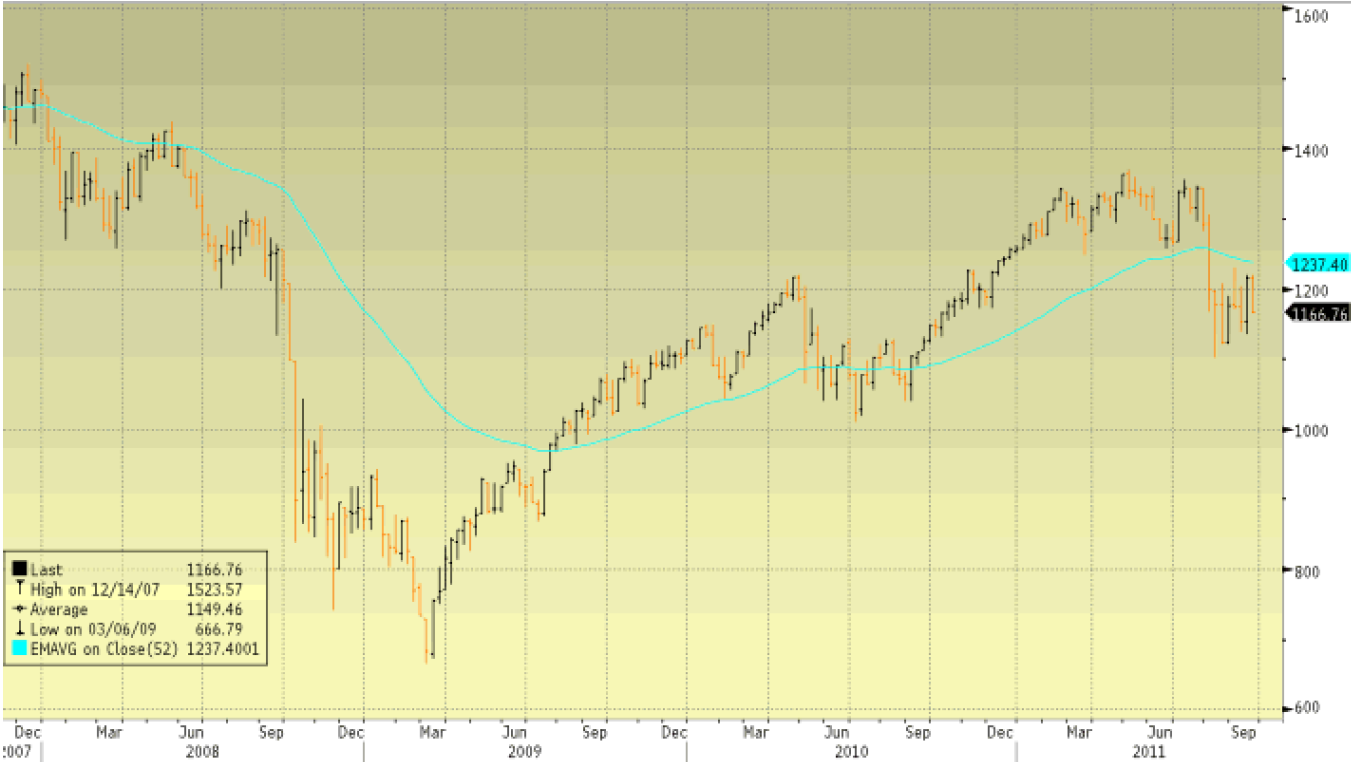As expected the Fed announced that it would extend the maturity on its portfolio. It will buy $400B of US debt with maturities of 6 years to 30 years; and it will sell $400B of 3 years or less US debt.
32% of the Fed debt purchases will be 6-8 years; 32% will be 8-10 years; 4% will be 10-20 years; and 29% will be 20-30 years. The Fed essentially targeted and will monetize the expected amount of US Treasury new debt issuance in coming quarters.
The most important point of the FOMC Communiqué is the Fed greatly lowered its current economic assessment and now asserts that “there are significant downside risks to the economic outlook.”
The Fed said “economic growth so far this year has been considerably slower than the committee expected. Indicators suggest a deterioration in overall labor market conditions in recent months, and the unemployment rate has moved up. Household spending has flattened out…”
The second most important point about the FOMC is: the Fed has spent one of its few remaining symbolic bullets. Only QE 3.0 [any type of monetization] and lowering the IOER remain.
All the Fed did was a partial appeasement of market expectations. There was no reduction in IOER.
The extension of the Fed’s portfolio is a craven submission to the demands of a few Street pundits to do something, anything. It will accomplish nothing good for US consumers or the US economy.
As we have been screaming for the past several weeks, the Fed did NOT do a reenactment of Operation Twist, which stated purposes were to drive short rates higher and long rates lower.
The odds of QE 3.0 diminish as the election approaches; so the Fed could be out of the market unless a big bank bursts or a major systemic problem appears.
Stocks tanked after several minutes of jerking around because the extension of the Fed’s holding is innocuous and even though the Fed sees ‘significant’ economic risks there is little hope of any new Fed action unless something really bad occurs. The prop that kept sellers constrained and some traders and investors in stocks, the possibility that the Fed will ‘do something’, has been removed.
Furthermore, trapped stock, commodity and economic bulls that unfathomably thought QE 3.0 would be enacted due to the extension of the scheduled September FOMC meeting to two days, to allow for a fuller discussion of policies, don’t have that canard to use anymore. And they were dead wrong anyway.
Bill Gross called for the Fed do to Operation Twist in early June, as QE 2.0 was about to end. Then parrot-like pundits and commentators joined the chorus and called for Twist. The Fed appeased them.
One wonders if Gross or some pundit calls for the Fed to start practicing voodoo and other Street pundits parrot that call, will the Fed announce that it will start practicing voodoo to satisfy Street expectations.
The DJ Transportation Average cratered 5.27% on Wednesday. Land transportation companies led the
way. This is another indication of economic duress.
Weekly and monthly technical indicators suggest stocks are in bear market mode.

S&P 500 Index, weekly – below downward sloping 52-week moving average for six weeks
S&P 500 Index, monthly – MACD on rare monthly sell signal, last triggered in December 2007
Please note the very ominous descending triple top formation, on the highly significant monthly basis.
“The race is not always to the swift nor the battle to the strong, but that’s the way to bet.” Damon Runyon
The Dollar Index formed a similar pattern that marked a significant top in 2001-2002.

Dollar Index, weekly – descending triple top marked a significant, if not generational, dollar top
Analysis: Fed’s twist moves hurts company pension plans
Lower rates mean the future benefits have a higher present value, ballooning the defined benefit funds’ liabilities. Pension consultants estimate a 1.0 percent drop in rates increases liabilities by 10 percent to 15 percent.
(Reuters)
The bottom line
Stocks are in a bear market; the global economy is teetering; Europe is imploding; the global banking system is dysfunctional; most sovereign debt no longer is ‘risk free’; nations have spent trillions trying to prevent the collapse of socialism and crony capitalism; central banks have monetized trillions trying to paper over collapsing living standards, unaffordable government spending and zombie banks.
So pray tell, what will possibly spark an economic rebound? Lower rates? Government deficit spending? Consumers taking on more debt? Trillions have been spent on a miserable economic dead cat bounce.
The only solution is a massive purge and then the restructuring of government, banks and consumer balance sheets and spending habits.
The facts are clear. The [perceived] painless fixes are exhausted. The trends are clear. Why should one bet any other way? We’re going with the swift and strong until proven otherwise.
~~~
Source:
The King Report,
M. Ramsey King Securities, Inc.
September 22, 2011



What's been said:
Discussions found on the web: